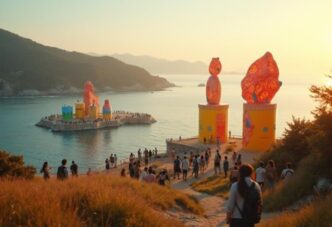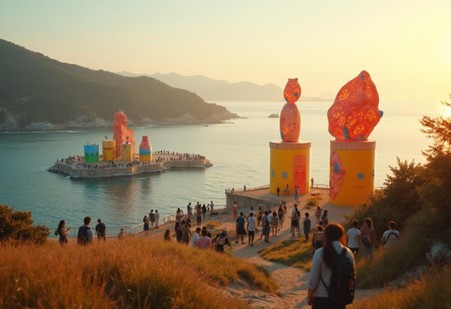Japan is globally celebrated for its harmonious blend of tradition and innovation—and nowhere is this more evident than at the Setouchi Triennale, a world-renowned contemporary art festival held every three years across the islands of the Seto Inland Sea. Since its inception in 2010, the Setouchi Triennale has revitalized remote island communities, attracting artists and visitors from around the world to experience art in dialogue with nature, history, and local culture.
What is the Setouchi Triennale?
The Setouchi Triennale, also known as the Setouchi International Art Festival, is held across 12 islands and 2 ports in the Kagawa and Okayama prefectures. These include famous art destinations such as Naoshima, Teshima, and Shodoshima, each offering unique installations, interactive artworks, and performances integrated into the local landscape and architecture. The festival is spread across three seasons—Spring, Summer, and Autumn—inviting travelers to return throughout the year and discover new art and experiences.
The event’s mission goes beyond showcasing contemporary art—it’s a cultural and social project that combats depopulation and aging populations in these island communities. Artists are often encouraged to collaborate with residents, leading to installations that reflect the region’s identity, history, and natural beauty.
A Living Museum of Land and Sea
Imagine walking along a quiet beach and encountering a massive mirrored structure reflecting the sky, or stepping into an abandoned schoolhouse transformed into a vibrant multimedia installation. This is the magic of the Setouchi Triennale—art exists not in sterile galleries, but in abandoned homes, rice fields, shipyards, and forests.
Visitors can explore:
- The Chichu Art Museum on Naoshima, partially underground and illuminated by natural light, housing works by James Turrell, Walter De Maria, and Claude Monet.
- Teshima Art Museum, shaped like a water droplet, where water seeps and flows through the minimalist concrete space—blurring the line between architecture and nature.
- Shodoshima’s Olive Park, where art is inspired by the island’s Mediterranean vibe and agricultural heritage.
Each island offers a distinct flavor of art, from immersive experiences to whimsical sculptures and deeply philosophical pieces.
Sustainable and Community-Driven
One of the most inspiring aspects of the Setouchi Triennale is its emphasis on sustainability and community participation. Many installations are permanent or semi-permanent, encouraging year-round tourism. Local residents often serve as guides, hosts, or collaborators, providing insight into the region’s culture and history.
The festival also promotes the use of eco-friendly transport, such as ferries, bicycles, and walking routes, making it easy for visitors to explore while minimizing their environmental footprint.
Why You Should Visit
If you’re seeking a deeper cultural experience beyond the typical tourist trail, the Setouchi Triennale offers an unforgettable journey into art, nature, and Japanese island life. It’s a rare opportunity to disconnect from the fast pace of urban life and reconnect with creativity in its most organic form.
Whether you’re an art lover, a curious traveler, or someone looking for inspiration, the Setouchi Triennale is a celebration of how art can transform not only places but also lives.
FAQs
Q1: When is the next Setouchi Triennale scheduled?
The Setouchi Triennale is held every three years. The most recent edition was in 2022. The next edition is expected in 2025, with events spread across three seasons—Spring (April–May), Summer (August–September), and Autumn (October–November). Official dates and artist lineups are typically announced a year in advance.
Q2: How can I travel between the islands during the festival?
The islands are connected by a reliable network of ferries, speedboats, and local buses. Festival organizers provide detailed route maps and schedules. Visitors can purchase transportation passes that allow for unlimited travel between islands during a given season. Bicycle rentals and walking paths are also available on most islands, making it easy to explore at your own pace.
















